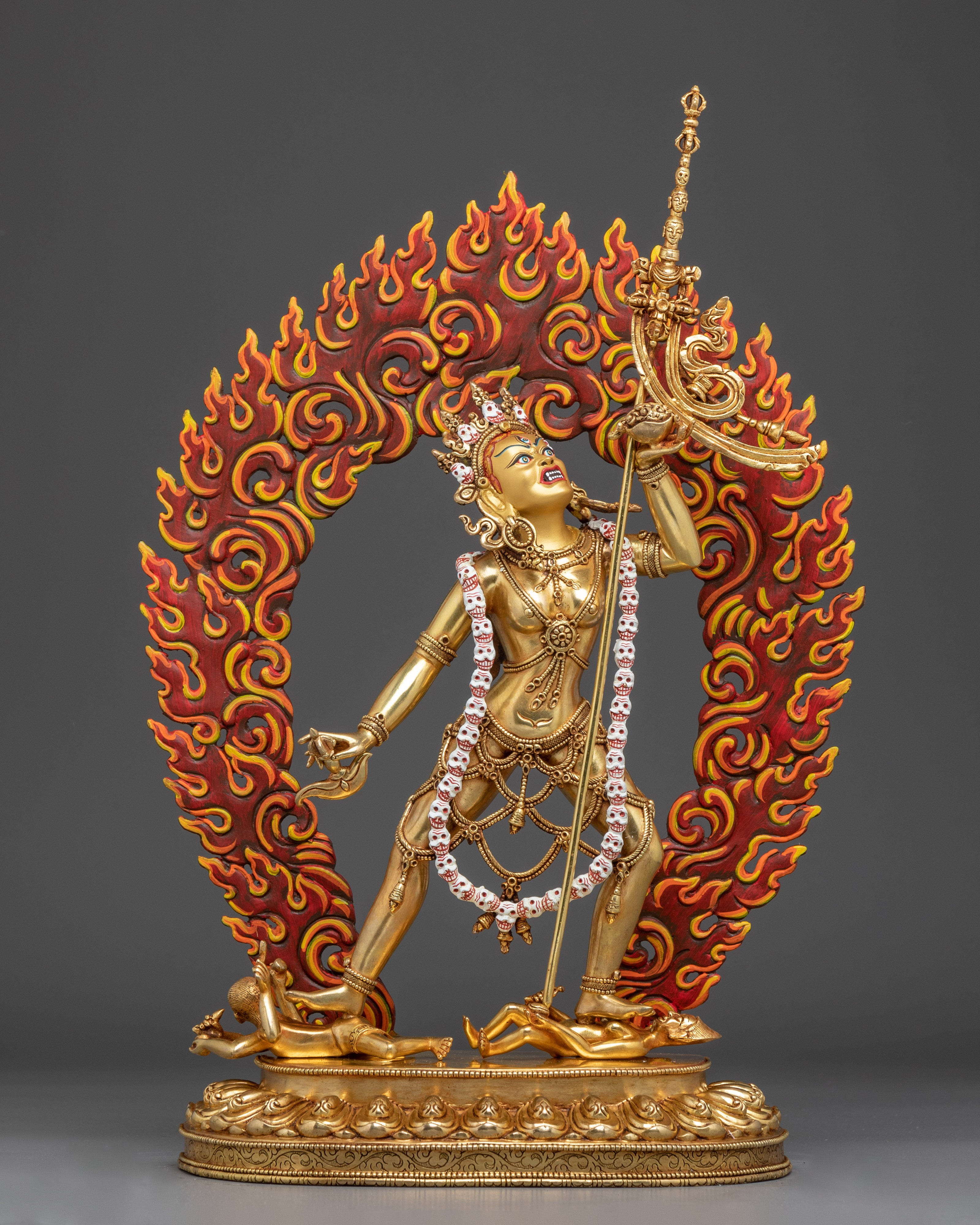Description
Handmade Vajrayogini Statue: The Queen of Dakinis
This Vajrayogini Statue, also known as the Queen of the Dakinis, stands at 17.1”/43.5cm in height and 11.8”/30cm at the base, with a weight of 4.42 kg. Made from 24K Gold Gilded, Gold & Acrylic Paintings, and a Copper Body, this statue showcases intricate Himalayan craftsmanship. Designed by skilled Nepali artisans, Vajrayogini is portrayed in her fierce and dynamic form, embodying the power of wisdom and transformation. Ideal for meditation spaces, tantric practice, or as a sacred art piece, this statue invokes devotion, inner clarity, and the path to realization.
She is depicted drinking blood from a skull cup held in her right hand and holding Kartika—the flaying knife—in her left. A garland of fifty skulls hangs from her neck, symbolizing the transcendence of ego, while a five-skull crown represents mastery over the five poisons. She stands upon two beings, signifying the subjugation of ignorance and delusion, atop a sun disc and lotus base radiating with a fiery halo. Resting across her shoulders is the khatvanga trident, symbol of her tantric consort.
Size: 17.1”/43.5cm (Height) x 11.8”/30cm (Base)
Weight: 4.42 kg
Material: 24K Gold Gilded, Gold & Acrylic Paintings, Copper Body
Vajrayogini is a fierce and powerful female deity in Tibetan Buddhism, revered as the supreme tantric goddess and known as the Queen of the Dakinis. She embodies the enlightened energy of transformation, wisdom, and the direct path to awakening. Often depicted in a dynamic and wrathful form, Vajrayogini symbolizes the cutting through of ego, ignorance, and negative emotions to reveal the true nature of reality. She is an important figure in Vajrayana Buddhism, especially in the practice of highest yoga tantra, where she represents the union of compassion and wisdom (prajñā). Her iconography — including a skull cup of blood, flaying knife (kartika), crown of skulls, and her posture on subjugated beings — reflects her role in destroying delusions and attachments that bind beings to samsara (the cycle of suffering).



